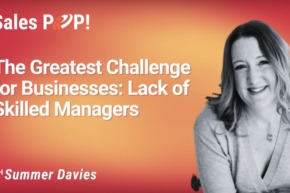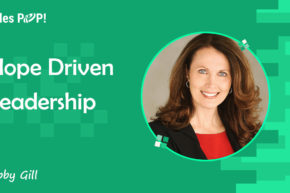Have you ever thought of someone as a brilliant jerk? In this Expert Insight Interview, Katrina Burrus discusses how to turn brilliant jerks into effective leaders. Dr. Katrina Burrus is a founder and CEO of Excellent Executive Coaching, an executive coaching company.
The interview discusses:
- The term brilliant jerk
- Looking, educating, and empathizing processes
- Expanding, executing, and enlightening processes
The Brilliant Jerk
Brilliant jerks are brilliant people who have extraordinary expertise and are extremely valuable to the organization, but they lack bedside manners and leadership skills. If an employee would come to a brilliant jerk saying that he wasn’t able to finish some task, the brilliant jerk would feel threaten and therefore would attack. This behavior affects both the organization and its employees. Some of the consequences are unresolved issues, fear of creativity, high turnovers, litigations, etc.
Look, Educate, and Empathize
The first step to do is to look at the corporate culture and values. Does the company value good leadership, or does it prefer “the end justifies the means” policy? Good leadership can sustain only in the environment which supports it. The second step is to educate. In this step, brilliant jerks need to become self-aware of their reactions, triggers, consequences of their behavior, and how they are perceived. Talking about their past, especially childhood, will give the reasons for triggers and abrasiveness. Usually, it is some pressure they experienced at a young age. The more they become self-aware, the more they will be socially aware as well. As leaders, they have to become able to strategize, to empathize, and to communicate with others in a manner that is the best for the organization. The third step is to empathize. They need to find someone who has their respect and a great influence on their career, and they need to analyze that person on a deeper level by using things they learned in a previous stage. This practice develops the skills to adapt to different people and various situations.
Expand, Execute and Enlighten
The next step is to expand the qualitative research on the stakeholders. This research needs to be very detailed. For example, instead of saying that the problem is bad communication, it should be explained that eye-rolling is the problem during communication. That way, we can approach the specific issue. The next step is to execute, which is a process of practicing new behavior and developing leadership agility through various situations, assumptions, and insights. They finally start to think not only of their success but of everyone’s successes. The last stage is enlightening, in which they empower and motivate others to come to alignment with their vision.
Our Host
John is the Amazon bestselling author of Winning the Battle for Sales: Lessons on Closing Every Deal from the World’s Greatest Military Victories and Social Upheaval: How to Win at Social Selling. A globally acknowledged Sales & Marketing thought leader, speaker, and strategist, he has conducted over 1500 video interviews of thought leaders for Sales POP! online sales magazine & YouTube Channel and for audio podcast channels where Sales POP! is rated in the top 2% of most popular shows out of 3,320,580 podcasts globally, ranked by Listen Score. He is CSMO at Pipeliner CRM. In his spare time, John is an avid Martial Artist.




Comments